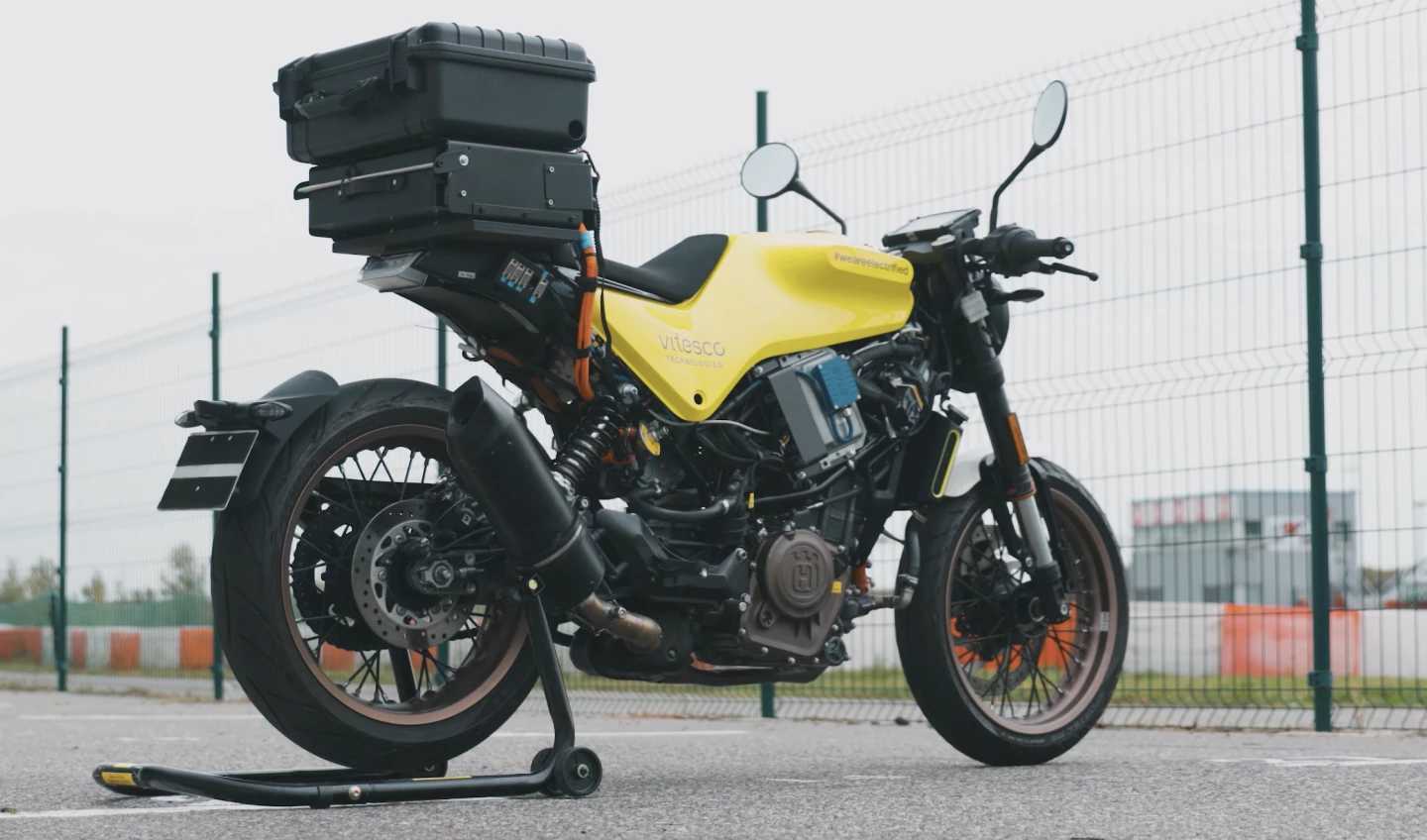German company Vitesco believes emission laws will start forcing motorcycle companies to use hybrid power, and has presented an example of a hybridized Husky at this year's EICMA expo to give us an idea of how performance and weight will be affected.
Designed for motorcycles over 125cc, Vitesco's kit includes a 48-volt, 12-kW (16-hp) electric motor – indeed, it's a starter/generator from Vitesco's automotive supply business.
There's also an automated "smart transmission" with a centrifugal clutch and an "intelligent actuator," and a "powertrain domain control unit" capable of sending power to the electric motor, the combustion motor, or both.
The battery pack is relatively tiny – just 1.5 kWh of energy storage. But if you stay below 60 km/h (37 mph), like you typically would around town anyway, it's enough battery for a useful 30 km (18.6 miles) of range running solely on electric power.

Vitesco says that the entire system as fitted to what looks like a 401cc Husqvarna Svartpilen adds some 20 kg (44 lb) – not a small intrusion. But on the other hand, it cuts tailpipe emissions by around 75% in a standard WMTC test cycle, it nearly doubles the torque output of the unmodified Husky, giving it "more punch than a conventional bike with a 1,000cc engine."
Clearly, this is a tech demo prototype, and as such it's a bit of a dog's breakfast to look at. But Vitesco says that if properly integrated into a production motorcycle, the hybrid system would add less than US$1,000 to the cost of the bike.
That's not bad, considering it'll give you a pretty serious performance boost, as well as a reverse gear, regenerative braking, and the ability to turn off your engine and whizz around town silently and clutchlessly as a zero-emissions vehicle.

These hybrids will be lighter and cheaper than fully electric motorcycles, while generally beating them on range, and offering the very handy ability to pop into a gas station and fill up.
It's a pretty compelling solution that could take motorcyclists three quarters of the way to full decarbonization, while adding to a bike's fun factor with the addition of that instant electric torque and not asking too much in return when it comes to weight and cost. Vitesco is a supplier to the auto and moto industries, and will make the system available to manufacturers, but there's no word as yet on when we might see one in production.
"For medium-sized and large motorcycles with combustion engines, we expect that future exhaust emission limits can only be met by using hybridization in combination with an automated manual transmission," said Torsten Bellon, Vitesco's head of 2-Wheeler & Powersports products, in a press release.

"With this aim in mind, our development focus was initially entirely on reducing CO2," he continued. "Over the past twelve months, we have adapted the technology, which originated in the passenger car segment, to meet the specific requirements of motorcycles, developing many additional functions that are only possible with an electrified powertrain. During our development work, it became increasingly clear that our hybrid concept opens up completely new possibilities for making motorcycling more dynamic, more comfortable and safer. We exploited these options and are now in a position to support manufacturers with an easy-to-implement, low-cost and highly effective system."
See it in action in the video below.
Source: Vitesco Technologies








